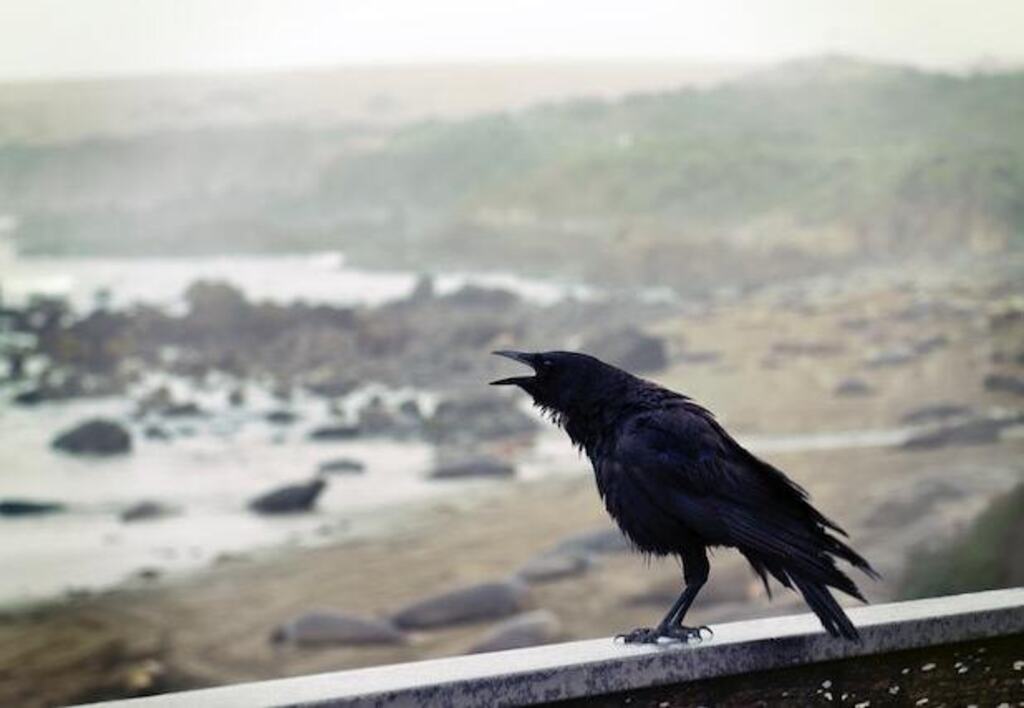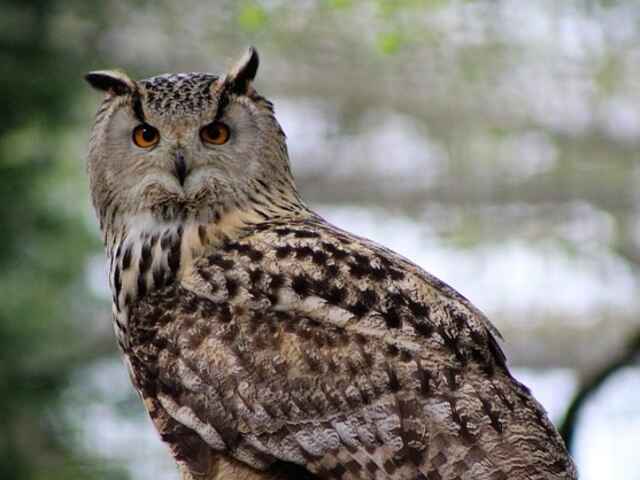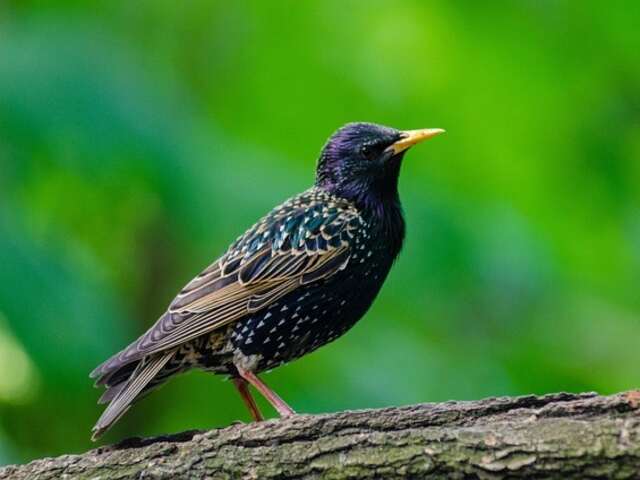Birds are a ubiquitous presence in our natural environment, and yet some people have developed a strong aversion to them.
Despite their beauty, songs, and ecological importance, many individuals harbor negative feelings towards birds due to their perceived nuisances and harmful impacts on human activities.
The phenomenon of naming birds after negative attributes reflects this human-bird conflict and highlights the complexity of our relationship with these feathered creatures.
According to a recent survey, approximately 17% of Americans dislike birds, and 7% even experience fear or phobia towards them.
These negative feelings may stem from various reasons, such as bird droppings, noise pollution, property damage, and bird-borne diseases.
In addition, some birds have acquired a bad reputation due to their aggressive behavior, territoriality, or association with pests.
As a result, people have given them names that reflect their negative perceptions, ranging from derogatory nicknames to humorous monikers.
This article will explore some of the birds named by people who hate birds, examining their common characteristics, cultural associations, and scientific classification.
Table of Contents
- 1 Overview
- 2 Common Birds
- 3 Birds with a bad reputation
- 4 Birds with annoying characteristics
- 5 Birds with negative cultural associations
- 6 Frequently Asked Questions
- 6.1 What is the scientific classification of the birds mentioned in the article?
- 6.2 How do these birds contribute to their respective ecosystems?
- 6.3 Are there any positive cultural associations or myths surrounding these birds?
- 6.4 Have any conservation efforts been made to protect these birds?
- 6.5 How do these birds compare in terms of intelligence or behavior to birds named by people who love birds?
- 7 Conclusion
- 8 Author
Overview
This Subtopic concerns the naming of birds by individuals who harbor a dislike or even hatred for these animals. The title of this Subtopic is meant to draw attention to the phenomenon where birds are named in ways that reflect negative attitudes towards them.
This naming practice has been observed in various regions and cultures, and raises questions about the impact of human biases on the way we perceive and name the natural world.

Explanation of the title
The title of this piece refers to the practice of assigning avian nomenclature by individuals with a negative disposition towards these creatures. This phenomenon is not uncommon, and there are several reasons why people may harbor disdain for birds.
Firstly, some cultures may view birds as symbols of bad luck or ill omens, leading to a negative association with these creatures.
Additionally, historical context plays a role in bird naming, as early explorers and settlers often named birds based on their appearance or behavior, without considering the impact of these names on the bird’s reputation.
Psychological reasons for bird hate may also be at play, such as a fear of birds or a past negative experience with a bird.
However, it is important to consider alternative perspectives on birds, as they play a crucial role in ecosystems and offer beauty and wonder to those who appreciate them.
Moving forward, it is necessary to examine common bird names and their impact on our perception of these creatures.

Common Birds
Common birds such as the Seagull, Sparrow, Pigeon, Starling, and Mallard Duck have been named by people who dislike them.
The Seagull, also known as the “Sky-rat”, is often seen scavenging for food and leaving droppings on buildings.
The Sparrow, also called the “Rat with wings”, is known for its ability to thrive in urban environments and its tendency to build nests in inconvenient places.
The Pigeon, commonly referred to as “Flying rats”, is known for its scavenging habits and tendency to congregate in large numbers.
Starlings are referred to as “Feathered Swarm” due to their tendency to form large flocks, while Mallard Ducks are known as “Quacking Nuisance” due to their loud quacking.
Seagull aka “Sky-rat”
With its scavenging tendencies and bold demeanor, the seagull has earned the moniker ‘Sky-rat,’ evoking a concept of a pest that infiltrates and loiters in unwanted areas.
Seagulls are highly adaptable birds and can be found in a variety of habitats, including coastal areas, urban cities, and even garbage dumps.
Their diet consists of a wide range of food, from fish and crustaceans to human waste and discarded food.
Seagulls are also known for their long migration patterns, with some traveling thousands of miles each year.
Despite their reputation as pests, seagulls play an important role in coastal ecosystems, helping to control populations of smaller prey species.
However, their scavenging behavior can also contribute to the spread of diseases and environmental contamination.
Efforts are being made to manage seagull populations and reduce their impact on human activities, such as through the installation of bird deterrent systems.
Moving on to the next bird named by those who hate them, the sparrow, also known as the “rat with wings.”
Sparrow aka “Rat with wings”
Often disregarded as a common urban bird, the sparrow has been colloquially labeled as the ‘rat with wings,’ highlighting the negative connotations associated with its ubiquitous presence in cities.
Sparrows are an invasive species that can out-compete native bird species for limited resources, and their behavior and habitat allow them to thrive in urban environments.
However, their impact on other bird species is not entirely negative, as they have been known to form symbiotic relationships with other birds, such as providing nesting sites for swallows.
Sparrow conservation efforts have been implemented in some cities, including providing natural nesting sites and limiting the use of pesticides.
Sparrows have also been used as symbols in different cultures, representing everything from happiness and friendship to impudence and pettiness.
Next, we will explore the pigeon, another urban bird commonly referred to as a “flying rat.”
Pigeon aka “Flying rats”
Sparrows, also known as “rats with wings”, have gained a reputation for being a nuisance to society. However, they are not the only bird species to be named by people who hate birds.
Pigeons, or “flying rats”, have also been given this unflattering nickname due to their prevalence in urban areas.
Despite being viewed negatively by some, pigeons have a rich history and are fascinating creatures to study.
Exploring pigeon behavior can reveal their intelligence, social behavior, and homing ability. Pigeon breeding practices have also been developed over centuries for racing and show purposes.
Pigeon racing culture is still prevalent in many countries, with enthusiasts breeding and training their birds for competitions.
In terms of conservation efforts, some cities have implemented programs to control pigeon populations and reduce the spread of disease.
Pigeons have also held symbolic importance in art and literature, appearing in works such as Picasso’s “Dove of Peace” and Charles Bukowski’s “The Last Days of the Suicide Kid”.
The pigeon’s negative reputation may overshadow its contributions to society, but they remain a fascinating and complex species worthy of study.
As we move on to the next bird on our list, the starling – also known as the “feathered swarm” – we can continue to explore the complex relationships between humans and the avian world.
Starling – “Feathered Swarm”
Despite their negative reputation as a nuisance species due to their large flocks and destructive feeding habits, starlings – also known as the ‘feathered swarm’ – possess unique and fascinating characteristics worth exploring.
Starlings are highly intelligent birds, capable of complex problem-solving and tool use. They have an important role in ecosystems, including dispersing seeds and controlling insect populations.
Starlings are also known for their mimicry abilities, able to imitate sounds of other birds, animals, and even machinery.
Their flocking behavior is a marvel to observe, with thousands of birds moving in perfect unison.
However, their impact on agriculture is a source of concern for many farmers, with starlings causing damage to crops and livestock feed.
Despite this, there is much to learn and appreciate about these birds, and continued research may provide new insights into their behavior and ecological significance.
As we shift our focus to the mallard duck – also known as the ‘quacking nuisance’ – it is important to remember the complexity and diversity of the avian world.
Mallard Duck – “Quacking Nuisance”
While the starling has been given the unfortunate nickname of ‘feathered swarm’, the mallard duck has been labeled as a ‘quacking nuisance’ by those who are not particularly fond of these waterfowl.
However, mallard ducks play an important role in local ecosystems as they help control insect populations and disperse seeds.
Additionally, ducks have been hunted for their meat and feathers for centuries, with evidence of duck hunting dating back to Ancient Egypt.
Ducks also hold cultural significance in various societies, such as in Chinese culture, where the mandarin duck is seen as a symbol of love and fidelity.
Furthermore, duck related tourism, such as duck watching and hunting, can bring economic benefits to local communities.
In scientific research, ducks have been used as models for studying avian influenza and other diseases.
As with any species, mallard ducks have both positive and negative impacts on their environment, but they continue to be a fascinating subject of study and observation.
Moving forward, let’s explore other birds that have been given a bad reputation, and delve into the reasons behind their negative monikers.
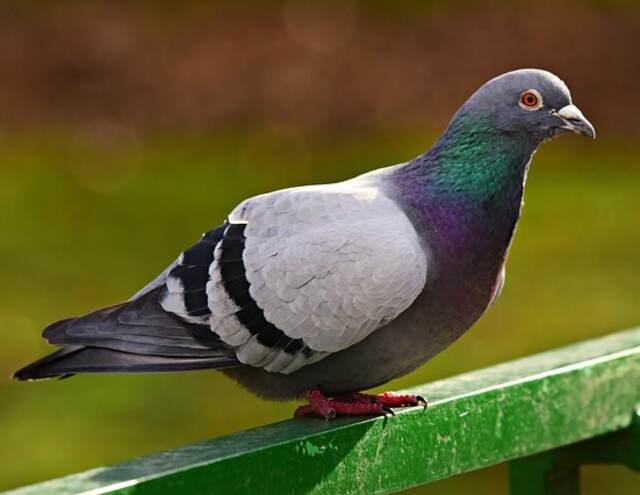
Birds with a bad reputation
Birds with a bad reputation have long been the subject of folklore and superstition.
Among them are the vulture, also known as the ‘carrion bird,’ which is often associated with death and decay; the raven, known as the ‘bird of ill omen,’ which is believed to bring bad luck; and the crow, referred to as the ‘death bird,’ which is associated with death and the underworld.
Additionally, the ostrich, often called the ‘feathered menace,’ is perceived as aggressive due to its size and powerful legs, while the turkey, known as the ‘troublesome fowl,’ is often seen as a nuisance due to its noisy behavior.
Despite their negative reputations, these birds play important roles in their respective ecosystems and have unique characteristics worth exploring.
Vulture aka “Carrion bird”
The vulture, often referred to as the ‘carrion bird,’ is a scavenger that plays a crucial role in the ecosystem by consuming animal carcasses and reducing the spread of disease.
Despite their important role, vultures have a bad reputation due to their association with death and decay.
However, efforts are being made to conserve vulture populations, as their decline could have serious consequences for the environment.
In mythology and folklore, vultures have been depicted as symbols of death and rebirth. In reality, vultures exhibit complex social behavior and have sophisticated feeding habits and preferences.
They will often congregate in large groups around a single carcass, and their sharp eyesight allows them to spot potential food sources from great distances.
As we transition to our next subtopic, it is important to note that the vulture’s negative image is not unique among birds, as even the raven, also known as the “bird of ill omen,” has been similarly maligned throughout history.
Raven aka “Bird of ill omen”
The Vulture, also known as the Carrion bird, was discussed in the previous subtopic. Moving onto the current subtopic, we explore the superstitions surrounding the Raven, also known as the Bird of ill omen.
The Raven has been associated with death and misfortune throughout history.
However, it has also played an important role in mythology and literature. Its unique intelligence and behaviors have contributed to these associations.
Ravens are known for their ability to use tools and their complex communication skills. In ecosystems, they play an important role in scavenging and maintaining balance.
Despite their negative associations, ravens are fascinating creatures worthy of further study and appreciation.
The subsequent section will focus on the Crow, also known as the death bird.
Crow aka “Death bird”
Often associated with death and misfortune, the Crow, also known as the harbinger of doom, has played a significant role in mythology and literature, engaging readers with its ominous presence.
Exploring the symbolism, cultural significance, intelligence, behavior, and habitat of crows reveals their importance in various cultures and their complex social structure.
In Native American culture, crows are considered sacred and are believed to be messengers between the living and the dead.
In Hindu mythology, crows are associated with death and are seen as the vehicle of the God of Death.
Crows are highly intelligent birds known for their problem-solving abilities, social skills, and ability to use tools.
Their behavior is fascinating, with studies showing that they can recognize individual human faces and teach their young to avoid them.
Crows are adaptable and can be found in a variety of habitats, from urban areas to forests. Their adaptability and intelligence have led to their success in surviving and thriving in different environments.
The crow’s cultural significance, intelligence, and behavior make it a subject of fascination for scientists and the general public alike.
Transitioning into the subsequent section about the ostrich, the feathered menace, we shift our attention to another bird that has been named with a negative connotation.
Ostrich – “Feathered Menace”
The ostrich, often referred to as the ‘feathered menace’, has a reputation that precedes it due to its size, strength, and potential danger to humans. Ostriches, the largest birds globally, can reach staggering weights of up to 350 pounds.
They have powerful legs that can kick with a force of up to 500 pounds per square inch, which is strong enough to kill a human.
Despite their intimidating nature, ostriches have been domesticated for ostrich farming, where the birds are raised for their feathers, leather, eggs, and meat.
Ostrich racing is also a popular activity in some parts of the world. Ostrich eggs are the largest eggs in the world and are considered a delicacy in some cultures.
Ostrich meat is also becoming more common and is considered a healthy alternative to other meats. However, ostriches are also facing conservation efforts due to their declining population in the wild.
The International Union for Conservation of Nature (IUCN) has listed the ostrich as a species of “Least Concern,” but their numbers are decreasing due to habitat loss and hunting.
Overall, the ostrich is a fascinating bird with a complex relationship with humans, from being feared as a ‘feathered menace’ to being farmed for various purposes and now, being the subject of conservation efforts.
The next bird in this series is the turkey, often referred to as the ‘troublesome fowl.’
Turkey – “Troublesome Fowl”
The turkey, a species known for its troublesome reputation, has a complex history of domestication and cultural significance that has led to both admiration and disdain among humans.
While turkeys are often referred to as troublesome due to their tendency to be loud and aggressive, they also hold cultural importance as a symbol of Thanksgiving and a source of food.
Turkey hunting is a popular activity, with many individuals opting to hunt wild turkeys for sport or as a means of population control.
Despite their problematic nature, turkeys continue to hold a significant place in human society and the food industry.
As we transition into the subsequent section about birds with annoying characteristics, it is important to note that turkeys are just one example of the complicated relationships humans have with various bird species.
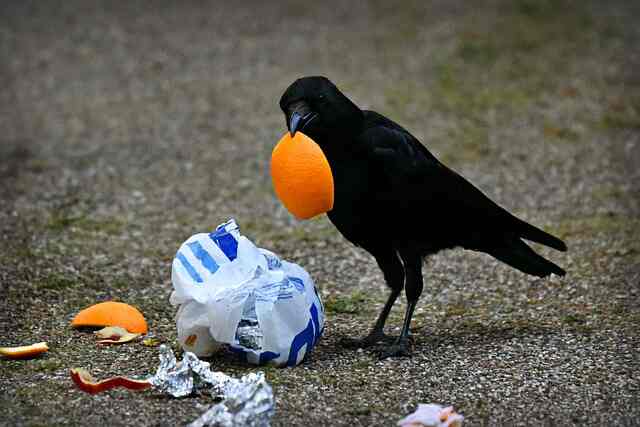
Birds with annoying characteristics
This discussion centers around birds with annoying characteristics, including but not limited to the woodpecker, Canada goose, blue jay, mockingbird, and myna bird.
The woodpecker, also known as the ‘headbanger bird,’ is notorious for its loud and repetitive pecking on trees and structures.
Canada geese, or the ‘menace bird,’ are known for their aggressive behavior towards humans and tendency to leave droppings in public spaces.
Blue jays, or the ‘bully bird,’ are known for their loud and aggressive behavior towards other birds and even smaller animals.
Mockingbirds are often referred to as ‘noise machines,’ due to their ability to imitate a wide variety of sounds and songs.
Lastly, the myna bird is known as a ‘chatterbox,’ due to its incessant chattering and mimicking of human speech.
Woodpecker aka “Headbanger bird”
With its distinctive drumming sound produced by rapidly pecking on trees, the woodpecker, also known as the “Headbanger bird,” has garnered a reputation that is simultaneously fascinating and frustrating for those who observe it.
Woodpecker behavior is largely driven by their need to find food, which they do by pecking and drilling holes in trees. This behavior can also cause damage to trees and buildings, which can be a nuisance for humans.
Woodpecker habitats can range from forests to suburban areas, and conservation efforts are important in preserving their populations. Woodpeckers also have various vocalizations for communication, such as drumming and calls.
Their nesting habits involve excavating cavities in trees for their young. Despite their unique qualities, woodpeckers are often viewed as a nuisance, which is why they have been given the nickname “Headbanger bird.”
This label is not unique to the woodpecker, as the Canada goose also has a similar reputation.
Canada Goose aka “Menace bird”
The Canada Goose, also known as the ‘Menace bird,’ is often associated with disruptive behavior due to their tendency to congregate in large numbers near bodies of water and leave behind droppings that can create health hazards and damage to properties.
Despite this negative reputation, the Canada Goose plays an important role in the ecosystem as a migratory bird that helps to disperse seeds and fertilize soil.
Conservation efforts have been put in place to protect the species, including the establishment of protected habitats and the regulation of hunting.
While the Canada Goose is not commonly consumed in North America, it is considered a delicacy in some cultures and can be found on menus in fine dining establishments.
As we move on to the next subtopic about the blue jay, it is important to note that while some birds may have negative traits, they all play a crucial role in maintaining the balance of our natural world.
Blue Jay aka “Bully bird”
The Blue Jay, also referred to as the ‘Bully bird,’ is often associated with aggressive behavior towards other bird species, which has led to negative perceptions and controversies surrounding its presence in residential areas.
This bird has earned its name for a reason, as it is known to steal food from other birds and even destroy their nests.
Blue Jays are opportunistic feeders and will eat almost anything, including insects, fruits, nuts, and small animals like mice and frogs.
Their aggressive behavior towards other birds is more apparent during breeding season, when they fiercely defend their territory.
Despite their negative reputation, Blue Jays are intelligent and adaptable birds that have interesting vocalizations and can mimic sounds of other birds and even humans.
To attract Blue Jays to your backyard, provide them with food and nesting materials like twigs and grass.
Interestingly, Blue Jays got their name from the French word “jai,” meaning “I have,” which refers to their loud and proud calls. Next, we will explore the Mockingbird, also known as the “noise machine.”
Mockingbird – “Noise Machine”
The Mockingbird is a remarkable avian species that has earned its nickname as the ‘noise machine’ for its uncanny ability to mimic sounds of other animals and objects, like a human car alarm in the middle of the night.
It belongs to the family Mimidae and can be found across the Americas, from Canada to South America.
The Mockingbird’s habitat and behavior vary depending on its location, but it generally prefers open areas with scattered trees and shrubs. Its diet consists of insects, fruits, and seeds.
The Mockingbird has been culturally significant in various societies, including Native American tribes, as it symbolizes intelligence, agility, and adaptability.
The bird’s vocalizations have also inspired musicians and writers throughout history.
Despite their cultural importance, Mockingbirds face threats such as loss of habitat and invasive species.
Conservation efforts have been implemented to protect these birds, including the planting of native plants and the removal of invasive species.
As we explore the symbolism, habitat and behavior, cultural significance, vocalizations, and conservation efforts of mockingbirds, we can also examine the Myna bird – ‘chatterbox’ and its unique characteristics.
Myna Bird – “Chatterbox”
The Myna bird, known as the ‘chatterbox’, possesses unique characteristics that distinguish it from other avian species.
This bird is highly vocal, with a repertoire of calls that can mimic human speech, animal sounds, and even machinery.
It is also a social creature, often living in large flocks, and engaging in cooperative behaviors like communal roosting and nest building.
Native to India and Southeast Asia, the Myna has been introduced and become invasive in many parts of the world, including Africa, Australia, and North America.
Despite its negative impact on local ecosystems, the Myna has cultural significance in Hindu mythology and literature, where it is associated with gods and goddesses, and considered a symbol of good luck and prosperity.
In some traditions, the bird is also used in traditional medicine, believed to have healing properties for a variety of ailments.
The Myna’s relationship with humans is complex, as it is both admired and reviled for its vocal abilities and social nature, but also considered a nuisance and a threat to biodiversity.
This bird serves as an example of how human attitudes and actions can shape the fate of a species, and highlights the need for responsible conservation and management practices.
This leads us to the next section about birds with negative cultural associations.
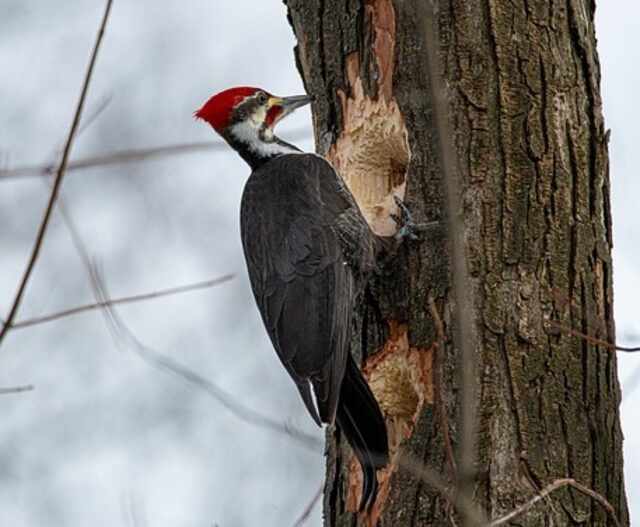
Birds with negative cultural associations
This discussion concerns birds that have negative cultural associations, which are often rooted in superstition and folklore.
Some birds have been named after their supposed negative traits, such as the Magpie, which is known as the “Thieving bird”.
The Owl is often associated with death and wisdom, while the Albatross is believed to bring bad luck.
The Crane is considered a “Sorrowful Messenger”, and the Peacock is often seen as a symbol of vanity.
These cultural associations have persisted for centuries and continue to shape our perceptions of these birds today.
Magpie aka “Thieving bird”
Infamous for its tendency to collect shiny objects, the Magpie has garnered a reputation in folklore and symbolizes both thievery and beauty.
Magpies are highly intelligent birds, known for their ability to use tools and solve complex problems. In different cultures, they have been associated with both good and bad omens, depending on the context.
They play an important role in ecosystems as scavengers and predators, helping to control insect and small mammal populations.
Magpies are also known for their unique vocalizations, which have been studied extensively by ornithologists.
They are skilled nest builders, constructing large, intricate structures that provide protection for their young.
Despite their negative reputation in some cultures, magpies are fascinating and important members of the avian community.
Moving forward, we will explore the owl, also known as the “wisdom bird” or “death omen”.
Owl aka “Wisdom bird” or “Death omen”
The owl, commonly known as the ‘wisdom bird’ or ‘death omen,’ is a culturally significant avian species with a complex and varied reputation.
Exploring owl symbolism reveals that in many cultures, owls are symbols of wisdom, intelligence, and knowledge.
However, some cultures view owls as harbingers of death and misfortune.
Despite these polarizing views, the cultural significance of owls has resulted in conservation efforts to protect their habitats and populations.
In terms of behavior patterns, owls are known for their nocturnal activity and silent flight, which aids in their hunting ability. Owls can be found in a variety of habitats, including forests, grasslands, and deserts.
Despite their widespread distribution, habitat loss and fragmentation pose threats to owl populations.
With the cultural and ecological significance of owls, it is crucial to continue efforts to conserve and protect these fascinating birds.
Moving on to the subsequent section about ‘albatross aka “bad luck bird”’…
Albatross aka “Bad luck bird”
While albatrosses have been historically associated with bad luck and misfortune, it is important to recognize the ecological significance of these large seabirds and the threats they face in their ocean habitats.
Exploring superstitions surrounding the albatross, it was believed that encountering one during a sea voyage would bring bad luck and even death to the crew.
However, these cultural beliefs do not reflect the true nature of the albatross, which plays a vital role in marine ecosystems as a top predator and indicator species.
Conservation efforts have been implemented to protect albatross populations from threats such as overfishing, pollution, and habitat destruction.
In mythology, the albatross has been depicted as a symbol of freedom and wanderlust, with its ability to travel vast distances over the open ocean.
Despite its negative connotations, the albatross holds a significant place in history and culture.
Transitioning into the subsequent section about the crane, another bird named by people who hate birds, we see how it has been portrayed as a sorrowful messenger in various cultures.
Crane – “Sorrowful Messenger”
Depicted as a sorrowful messenger in various cultures, the crane holds symbolic significance and serves as a reminder of the impermanence of life.
The exploration of symbolism, cultural significance, historical meaning, linguistic origins, and emotional associations reveal the multifaceted nature of this bird.
In Japan, the crane is a symbol of longevity, good fortune, and fidelity.
In China, it represents happiness and good luck, while in Korea, it symbolizes peace and prosperity.
In Ancient Greece, the crane was associated with Apollo, the god of prophecy and music.
The word “crane” comes from the Old English “cran,” which has roots in the Germanic and Indo-European languages.
The emotional associations of the crane are tied to the bird’s graceful and tranquil nature, as well as its mournful call.
The crane’s longevity and loyalty make it a fitting symbol for marriage and enduring relationships.
The crane’s association with death and sorrow comes from its habit of standing silently at the edge of water, as if waiting for the departed.
Such exploration of the crane’s symbolism and cultural significance highlights the enduring impact this bird has had on human culture.
Moving on to the next bird named by people who hate birds, the peacock is often viewed as a symbol of vanity.
Peacock – “Symbol of Vanity”
The Crane, also known as the ‘Sorrowful Messenger,’ elicits a sense of melancholy in its name, while the Peacock, on the other hand, is associated with vanity.
The psychology behind symbolic animal names reveals much about the human psyche and its projection of emotions onto the natural world.
Peacock feathers have been used in various cultural practices and hold significant cultural significance in many parts of the world.
The societal views on vanity and beauty have evolved over time, and while vanity was once deemed a negative trait, it is now celebrated and embraced.
Historical associations with peacocks date back to ancient civilizations such as Greece and Rome, where they were considered a symbol of immortality.
Peacock symbolism in art and literature is prevalent and embodies concepts such as beauty, pride, and arrogance, reflecting the human experience.
Frequently Asked Questions
What is the scientific classification of the birds mentioned in the article?
Birds are classified taxonomically based on their physical characteristics, behavior, and genetic makeup. The classification system is hierarchical, with birds being grouped into a series of nested categories that reflect their evolutionary relationships.
At the highest level, birds are divided into two groups: the ratites and the carinates. The ratites are flightless birds, such as ostriches and emus, while the carinates are birds that can fly, such as sparrows and eagles.
The importance of bird conservation efforts cannot be overstated, as birds play a crucial role in pollination and seed dispersal.
They also serve as indicators of environmental health and are an integral part of many ecosystems.
Unfortunately, human activities such as habitat destruction, pollution, and climate change have had a significant impact on bird populations worldwide.
The evolution of bird behavior and communication has also been shaped by environmental factors and social interactions.
Overall, understanding the taxonomic classification of birds and the factors that impact their survival is essential for effective conservation efforts and the preservation of biodiversity.
How do these birds contribute to their respective ecosystems?
Birds play a crucial role in their respective ecosystems, and their ecological significance cannot be overstated.
They contribute to food chains as both predators and prey, and their impact on plant life is significant as they disperse seeds and pollinate flowers.
Birds have evolved numerous adaptations to survive in their environments, such as specialized beaks and feathers for foraging and flying, respectively.
Additionally, their interactions with other species, such as symbiotic relationships with insects and mammals, further highlight their importance in maintaining the delicate balance of their ecosystems.
Overall, birds are a vital component of the natural world, and their presence or absence can have significant consequences for the health and stability of their ecosystems.
Are there any positive cultural associations or myths surrounding these birds?
The cultural significance of birds named by people who hate birds cannot be denied, though it is often overshadowed by negative stereotypes.
These birds have been labeled as pests, nuisances, and even symbols of death and misfortune.
However, it is important to consider their impact on local communities, as they often play a crucial role in ecosystems.
Folklore and legends surrounding these birds can be both positive and negative, with some cultures viewing them as sacred and others as harbingers of doom.
Despite their negative reputation, changing perceptions and attitudes towards these birds can lead to a greater understanding and appreciation for their importance in the natural world.
Have any conservation efforts been made to protect these birds?
The conservation efforts for the birds named by people who hate birds have been a topic of concern for environmentalists and governments alike.
These birds face numerous threats, including habitat loss, hunting, and pollution.
The impact on local communities can be severe, as these birds play an important role in the local ecosystem, and their disappearance can have ripple effects.
In response to these threats, various government regulations have been put in place to protect these birds, including hunting bans and habitat protection laws.
Additionally, public awareness campaigns have been launched to educate people about the importance of these birds and the need to protect them.
Despite these efforts, more needs to be done to ensure the survival of these birds and their habitats.
How do these birds compare in terms of intelligence or behavior to birds named by people who love birds?
Comparing the intelligence and behavior of birds named by people who hate them to those named by people who love them is a complex task.
While studies have shown that there are no significant differences in intelligence between different species of birds, it is possible that negative naming may influence the perception of intelligence.
Behavioral differences may also exist between the two groups of birds, as negative naming may lead to a lack of research and understanding.
Additionally, hate named birds may have a negative impact on the ecosystem due to their perceived undesirability.
Birdwatchers may also have a negative perception of hate named birds, leading to a lack of conservation efforts.
Possible reasons for negative naming include fear, superstition, or personal experiences.
Further research is needed to fully understand the impact of negative naming on bird behavior and conservation efforts.
Conclusion
The naming of birds is often a reflection of cultural attitudes towards them. In the case of birds named by people who hate birds, the names can range from humorous to derogatory.
Common birds such as the pigeon and crow often fall victim to negative naming, with terms like ‘rats with wings’ or ‘flying garbage disposals’ being used to describe them.
Birds with a bad reputation, such as the vulture and turkey vulture, are also often given negative names, with ‘buzzard’ and ‘carrion crow’ being common epithets.
Birds with annoying characteristics, like the seagull and its tendency to steal food, are also often given unflattering names.
Finally, birds with negative cultural associations, such as the owl and its association with death and bad luck, are often given names that reflect these associations.
In conclusion, the naming of birds reflects cultural attitudes towards them, with birds named by people who hate them often being given derogatory or humorous names.
However, it is important to remember that these names are not necessarily reflective of the birds themselves, but rather of human perceptions and attitudes towards them.
As the old saying goes, ‘don’t judge a book by its cover’ – or, in this case, a bird by its name.

